Early Career Scientist Spotlight
Dr. Gabriella Weiss (she/her)
Isotope Geochemist
Astrochemistry Laboratory (691)
What inspired you to pursue a career as an isotope geochemist?
A motivation to learn about environments of the past has been a big driver for me in each step of my scientific career so far. I have always felt a close connection with the environment around me and have spent as much time outdoors as possible. During my undergraduate studies, I learned a lot about my cultural roots and those of others. I understood the vital role that nature plays for many civilizations on Earth. After finishing my undergraduate studies, I felt a bit lost and uncertain about what I wanted to do next. I was struggling to figure out how to connect my undergraduate education with my love of nature. I worked a few different jobs -- in restaurants, coffee shops, elementary schools, and offices -- and I traveled to a few countries where I had many conversations about nature and how people interact with their surrounding environment. I was able to visit a lot of archaeological sites in Guatemala, Honduras, and Mexico. Walking around these old buildings full of beautiful artwork and careful planning enshrouded in such dense vegetation transported me to another reality. I became interested in understanding how the world looked when humans occupied these old structures. I made the decision to go back to school to learn more about how people study environments of the past.
During my master’s studies, I learned about stable and radiogenic isotopes and how they are important for reconstructing the environments of archaeological sites. The field of isotope geochemistry relies on making measurements of forms of a given element that have a different number of neutrons. Since neutrons are neutrally charged, more or less of them does not change the overall charge of the molecule. But the number of neutrons can be detected when measuring the mass, and isotope geochemists measure the ratios of these different numbers of neutrons to learn more about an environment or a specific process. For example, carbon has two stable isotopes – carbon-12 and carbon-13 – which are widely applied to different environments on Earth and organics from meteorites. Carbon also has one radiogenic isotope – carbon-14 – which is used as a geochronological dating tool. I immediately became fascinated by isotopes as a scientific tool and I saw how their use would help me connect my cultural and scientific curiosity. I learned more about isotope analysis during my PhD and my first postdoc, and I plan to continue to use isotope analysis at Goddard and throughout my scientific career to answer questions in Oceanography and Astrobiology.
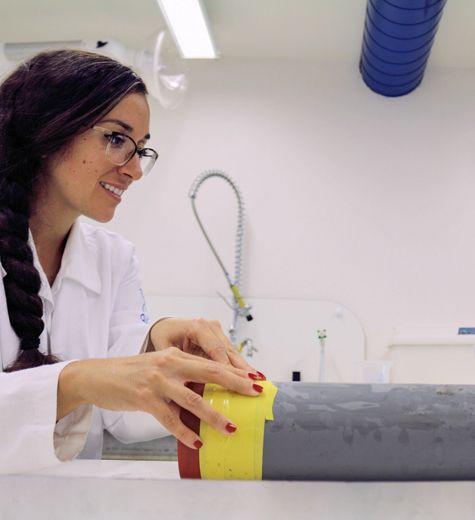
Credit: Rose Leahy
What is one of your favorite moments in your career so far?
A pivotal moment for me was during my master's studies in Belfast. As usual, it was a rainy day, and I was running late to class because I was trying to find a way to protect my final project from getting drenched in the rain on the way to school. I was walking briskly to campus, and a bus drove through a massive puddle, splashing me with murky brown puddle water. I tried to clean myself up a bit before class and was worried that my poster may have gotten wet. I made it to class just on time. My heart sunk as I was pinning the poster to a board. I had spelled the word “environment” wrong in the poster title. I felt pretty deflated about how my whole morning had gone so far, and had big doubts about what I was even doing in this program, but I did my best to present my poster. Following the presentations, we all gave each other feedback and talked about what we would like to do after we finish our master's. The professor was very complimentary and told me he thought I would make a successful PhD student. A PhD was never something I had considered for myself. I had, and still do, struggle a lot with feeling like I belong in academic spaces. That day started out on what felt like a negative note, where I focused more on my mistakes than my successes. When I felt very unsure of my future and place in academia, someone expressed their confidence in my abilities. It really showed me that how we perceive ourselves is not always how the world perceives us. Expressing confidence in another person can go a long way and change the trajectory of someone’s life by allowing them to see opportunities they may have never considered for themselves.
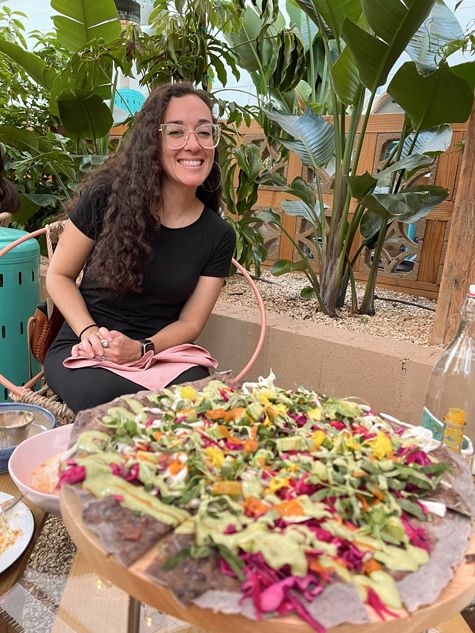
Credit: Emily Hur
Tell us about the research projects you are currently working on.
I am working with Dr. Heather Graham to analyze organic compounds by high-resolution mass spectrometry. We are hoping to understand how molecules break apart within a mass spectrometer and how this fragmentation process might relate to the ways molecules are formed. We want to understand how the complexity of a molecule is reflected in the number of pieces produced in the mass spectrometer. This method also allows us to look within a molecule and understand how atomic sites differ in the amount of abundant and rare isotopes. The term “isotope” seems fancy, but it just refers to a version of an element with a different number of neutrons. The ratio of heavy to light stable isotopes is a tool that is used to understand a variety of environmental and planetary sciences questions. For example, isotopes can help determine the environmental context under which a compound was formed. A molecule’s isotopic signature can also help us learn details about how that synthesis occurred, like whether a given molecule was produced by a living organism vs. produced by a non-living, chemical process. We are using Orbitrap mass spectrometry for these analyses. Orbitraps are in development for space flight, and they might be able to make some of these measurements in situ one day.
In addition to my main project with Dr. Graham, I am interested in understanding how the isotope composition of amino acids and other small organic compounds change with different metabolisms and how these signatures can be used to understand the broader environmental context in different locations on Earth. My favorite lipid biomarkers are long-chain alkenones which are made by haptophyte algae (photosynthetic phytoplankton) that live in oceans, estuaries, and lakes. The hydrogen isotope composition of these lipids can help understand past hydrological changes and I hope to generate more records of alkenone hydrogen isotope values to learn about past oceanic and lacustrine hydrology.
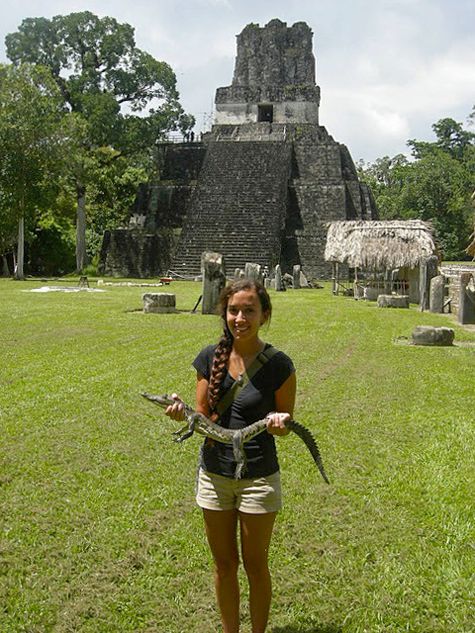
Credit: Unnamed worker at Tikal
If you were to expand your current research focus, what new topics would you explore?
I am really fascinated by ice algae. I would love to learn more about the ecosystems they live in. I wonder what sorts of metabolisms and symbiotic relationships are happening on the undersides of ice? Do ice algae produce interesting lipids or metabolites that can be used as proxies for understanding hydrological change in ice covered environments?
I also think there are interesting applications of isotope analysis for the study of medical conditions. Perturbations to metabolism can be detected on an isotopic level and I would love to explore how isotopes can help understand the progression of medical conditions in less invasive ways than other existing methods.
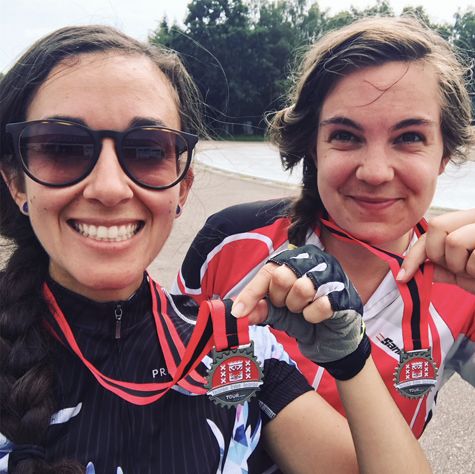
Credit: Gabriella Weiss
What do you like to do in your free time?
I enjoy a balance between finding quiet moments in nature and exploring loud, bustling cities. I really enjoy trying new restaurants as well as cooking my own food and making new recipes. I love reading in a park (or under a blanket on the couch during the east coast winter). When the weather warms up, I like riding my road bike, camping, and hiking. Anytime I can spend outdoors is cherished time for me. I’ve been knitting since I was seven and I also enjoy small sewing projects, photography, and dancing. I have a feisty black cat who spices up my life every day and I’ve enjoyed learning about her likes and dislikes and I loved seeing her experience new things on our drive from California to Maryland. Besides my cat, I really enjoy being around animals and working on farms. I hope to live in a place with enough land to have a small farm of my own one day.
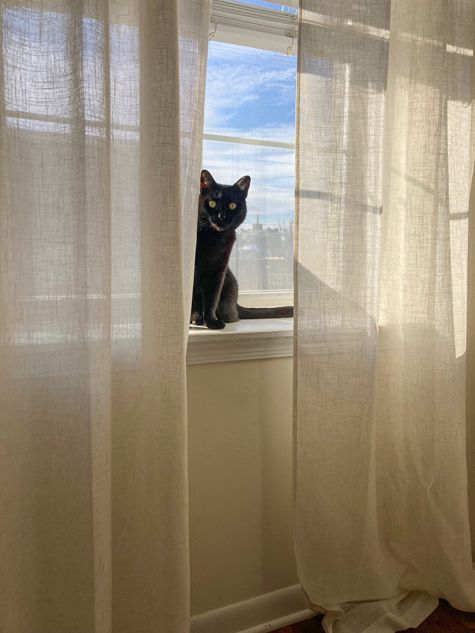
Credit: Gabriella Weiss
What are your future research interests and goals?
I am fascinated by organisms with unique metabolisms that live in environments that were previously thought to be uninhabited. I hope someday to be able to explore the deep sea in the submersible Alvin and visit Antarctica. I am passionate about science education and hope to build a diverse research group of my own which explores oceans on Earth and other planets using organic isotope geochemistry tools.
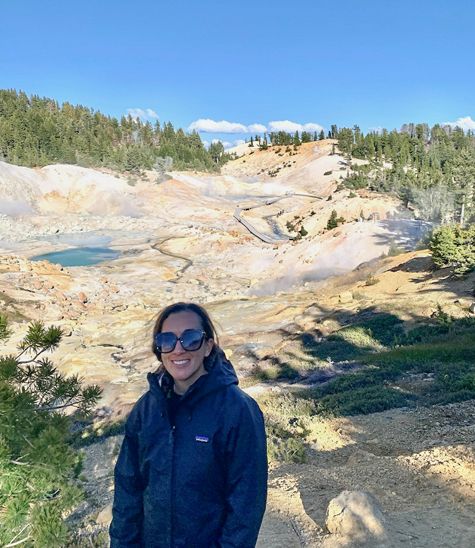
Credit: Frankie Pavia
Who inspires you?
I have worked with elementary school children throughout my adult life, and I am always inspired by their perspectives on the world and on science specifically. I really appreciate their ability to approach problems and understanding tough concepts from a unique, often unbiased, angle. Some of the hardest questions I have ever encountered have come from young children. I find their curiosity to be motivating and I hope I can approach science, and life in general, with a similar curiosity. I also really appreciate having to break down complex scientific concepts to help children understand them. It has highlighted for me how much jargon is used across science as well as ideas or concepts I have personally taken for granted and did not fully understand myself.
Biography
Home Town:
Redwood City, California
Undergraduate Degree:
B.A. in Anthropology with a Religious Studies minor, University of California, Riverside, Riverside, CA
Post-graduate Degrees:
M.Sc. in Dating and Chronology, Queen’s University Belfast, Belfast, Northern Ireland
PhD in Marine Organic Geochemistry, Utrecht University and the Royal Netherlands Institute for Sea Research, Texel, The Netherlands

